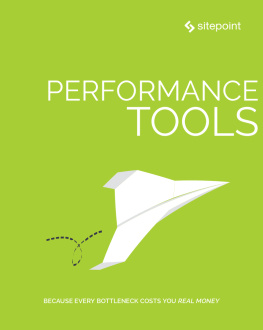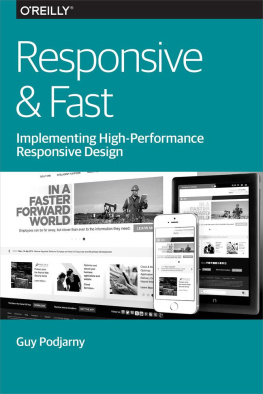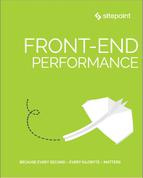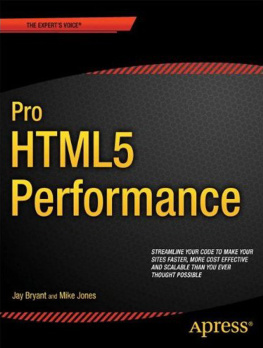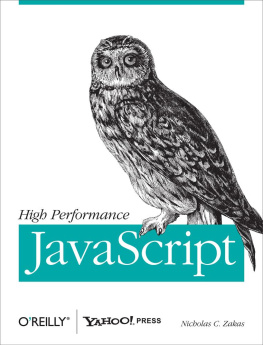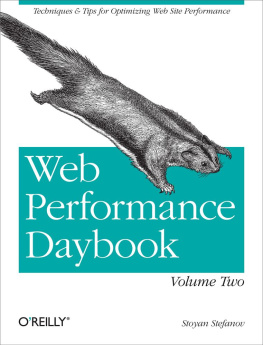Credits
Even Faster Web Sites contains six chapters contributed by the following authors.
Dion Almaer is the cofounder of Ajaxian.com, the leading source of the Ajax community. For his day job, Dion coleads a new group at Mozilla focusing on developer tools for the Web, something he has been passionate about doing for years. He is excited for the opportunity, and he gets to work with Ben Galbraith, his partner in crime on Ajaxian and now at Mozilla. Dion has been writing web applications since Gopher, has been fortunate enough to speak around the world, has published many articles and a book, and, of course, covers life, the universe, and everything else on his blog at http://almaer.com/blog.
Douglas Crockford was born in the wilds of Minnesota, but left when he was only six months old because it was just too damn cold. He turned his back on a promising career in television when he discovered computers. He has worked in learning systems, small business systems, office automation, games, interactive music, multimedia, location-based entertainment, social systems, and programming languages. He is the inventor of Tilton, the ugliest programming language that was not specifically designed to be an ugly programming language. He is best known for having discovered that there are good parts in JavaScript. This was an important and unexpected discovery. He discovered the JSON (JavaScript Object Notation) data interchange format. He is currently working on making the Web a secure and reliable software-delivery platform. He has his work cut out for him.
Ben Galbraith is the codirector of developer tools at Mozilla and the cofounder of Ajaxian.com. Ben has long juggled interests in both business and tech, having written his first computer program at 6 years old, started his first business at 10, and entered the IT workforce at 12. He has delivered hundreds of technical presentations worldwide, produced several technical conferences, and coauthored more than a half-dozen books. He has enjoyed a variety of business and technical roles throughout his career, including CEO, CIO, CTO, and Chief Software Architect roles in medical, publishing, media, manufacturing, advertising, and software industries. He lives in Palo Alto, California with his wife and five children.
Tony Gentilcore is a software engineer at Google. There, he has helped make the Google home and search results pages lightning fast. He finds that the days seem to fly by while writing web performance tools and techniques. Tony is also the creator of the popular Firefox extension, Fasterfox.
Dylan Schiemann is CEO of SitePen and cofounder of the Dojo Toolkit, an open source JavaScript toolkit for rapidly building web sites and applications, and is an expert in the technologies and opportunities of the Open Web. Under his guidance, SitePen has grown from a small development firm to a leading provider of inventive tools, skilled software engineers, knowledgeable consulting services, and top-notch training and advice. Dylans commitment to R&D has enabled SitePen to be a major contributor to and creator of pioneering open source web development toolkits and frameworks such as Dojo, cometD, Direct Web Remoting (DWR), and Persevere. Prior to SitePen, Dylan developed web applications for companies such as Renkoo, Informatica, Security FrameWorks, and Vizional Technologies. He is a cofounder of Comet Daily, LLC, a board member at Dojo Foundation, and a member of the advisory board at Aptana. Dylan earned his masters in physical chemistry from UCLA and his B.A. in mathematics from Whittier College.
Stoyan Stefanov is a Yahoo! frontend developer, focusing on web application performance. He is also the architect of the performance extension YSlow 2.0 and cocreator of the Smush.it image optimization tool. Stoyan is a speaker, book author (Object-Oriented JavaScript from Packt Publishing), and blogger at http://phpied.com, http://jspatterns.com, and YUIblog.
Nicole Sullivan is an evangelist, frontend performance consultant, and CSS Ninja. She started the Object-Oriented CSS open source project, which answers the question, How do you scale CSS for millions of visitors or thousands of pages? She also consulted with the W3C for their beta redesign, and she is the cocreator of Smush.it, an image optimization service in the cloud. She is passionate about CSS, web standards, and scalable frontend architecture for large commercial websites. Nicole speaks about performance at conferences around the world, most recently at The Ajax Experience, ParisWeb, and Web Directions North. She blogs at http://stubbornella.org.
Nicholas C. Zakas is the author of Professional JavaScript for Web Developers, Second Edition (Wrox) and coauthor of Professional Ajax, Second Edition (Wrox). Nicholas is principal frontend engineer for the Yahoo! home page and is also a contributor to the Yahoo! User Interface (YUI) library. He blogs regularly at his site, http://www.nczonline.net.
Preface
Vigilant: alertly watchful, especially to avoid danger
Anyone browsing this bookor its predecessor, High Performance Web Sites understands the dangers of a slow web site: frustrated users, negative brand perception, increased operating expenses, and loss of revenue. We have to constantly work to make our web sites faster. As we make progress, we also lose ground. We have to be alert for the impact of each bug fix, new feature, and system upgrade on our web sites speed. We have to be watchful, or the performance improvements made today can easily be lost tomorrow. We have to be vigilant.
Vigil: watch kept on a festival eve
According to the Latin root of vigil , our watch ends with celebration. Web sites can indeed be fasterdramatically soand we can celebrate the outcome of our care and attention. Its true! Making web sites faster is attainable. Some of the worlds most popular web sites have reduced their load times by 60% using the techniques described in this book. Smaller web properties benefit as well. Ultimately, users benefit.
Vigilante: a self-appointed doer of justice
Its up to us as developers to guard our users interests. At your site, evangelize performance. Implement these techniques. Share this book with a coworker. Fight for a faster user experience. If your company doesnt have someone focused on performance, appoint yourself to that role. Performance vigilante I like the sound of that.
How This Book Is Organized
This book is a follow-up to my first book, High Performance Web Sites (OReilly). In that book, I lay out 14 rules for better web performance:
Rule 1: Make Fewer HTTP Requests
Rule 2: Use a Content Delivery Network
Rule 3: Add an Expires Header
Rule 4: Gzip Components
Rule 5: Put Stylesheets at the Top
Rule 6: Put Scripts at the Bottom
Rule 7: Avoid CSS Expressions
Rule 8: Make JavaScript and CSS External
Rule 9: Reduce DNS Lookups
Rule 10: Minify JavaScript
Rule 11: Avoid Redirects
Rule 12: Remove Duplicate Scripts
Rule 13: Configure ETags
Rule 14: Make Ajax Cacheable


![Souders - Even faster web sites: [performance best practices for web developers]](/uploads/posts/book/137083/thumbs/souders-even-faster-web-sites-performance-best.jpg)


